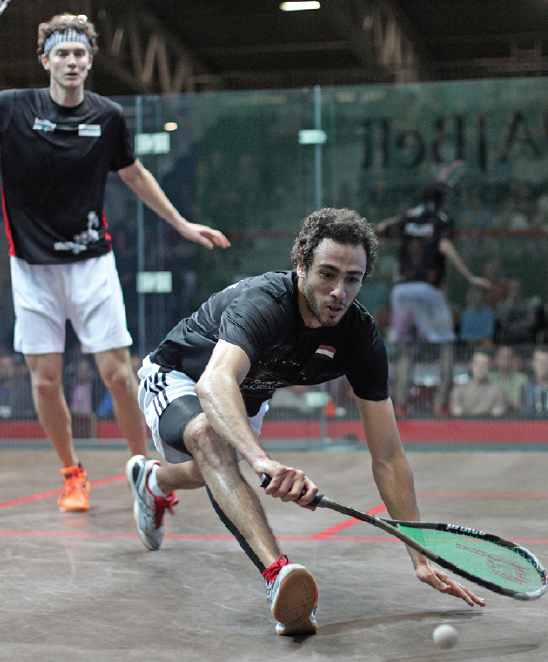By Richard Millman
Our sport is a modern reflection of the very primeval attitudes and instincts that have allowed us to get this far in our history.
Our two essential survival sensory systems—namely primary focus and peripheral awareness—constantly combine to allow us to maintain our relationship with the ball and a continual reconnaissance of our environment and our own place within that environment.
These are our primary concerns.
Once these basic life and death attitudes are constantly in place, we are able to manage our situation and, in particular, that commodity that is the lifeblood of squash—time.
The capacity to feel time in an almost tangible way is a rare asset in a squash player, but some have mastered it and constantly manage its ebb and flow.
Best among the masters in recent years has been Ramy Ashour.
While fans have been exhilarated by his wonderful technical skills, it is in fact his management of time, and his movement to reap the benefits of that time, that are his greatest asset.
To watch what Ashour does with his feet for the duration of a rally is to really observe a genius.

More than any other player, he uses his feet in a symbiosis of purpose that is the physical equivalent of the greatest virtuoso musician. Before he strikes the ball, he prepares and begins his movement and controls the pace of his shot, to ensure that, by the time the ball is available to his opponent, he is already in a position to defend the court. While moving to his strategic defensive position, he simultaneously maintains his ‘oneness’ with the ball—never allowing his primary focus to become disengaged from the ball, and using his peripheral sense of ‘feel’ to find the best court position to equilaterally defend and counter-attack if possible.
My great friend Gamal El Amir, himself a legendary exponent of the game, says that ‘Squash is Music’ and nowhere is that more true than with Ashour.
The combination of absolute mental, physical and emotional attention of the primary focus on the ball with his hypersensitive ‘feel’ of his world around him, places him in the ninety-ninth percentile of professional ball-sport athletes of all time.
To watch what Ashour does with his feet for the duration of a rally is to really observe a genius
Consider the great goalkeepers in soccer—Gordon Banks of England, Manuel Neuer of Germany, and Tim Howard of the USA.
What makes these athletes extraordinary? The capacity, under duress, to maintain their primary focus on the ball while peripherally never losing track of their goal posts. An almost catlike sense of balance combined with pre–science of an almost godlike capacity. An appreciation of angles that would make any architect or mathematician green with envy.
And yet…Ramy Ashour and other great squash players such as Jonathon Power, Jansher Khan, Peter Nicol, Geoff Hunt, Jonah Barrington and of course the late, great Hashim Khan, these extraordinary human beings didn’t just maintain an absolute relationship with the ball and defend a two dimensional goal with two posts. No, they defend and defended four corners and everything else in their environment.
As any geometrist will tell you, assessing and positioning yourself to de– fend a space between two points is hard enough for a soccer goalie, but doing it for four corners takes amazing perception and concentration, especially when you have to give the ball to your opponent before you defend the goal!
So next time you try and position yourself on the court, think about Ashour and the other great squash players of history—the greatest goalkeepers the world has ever known.





